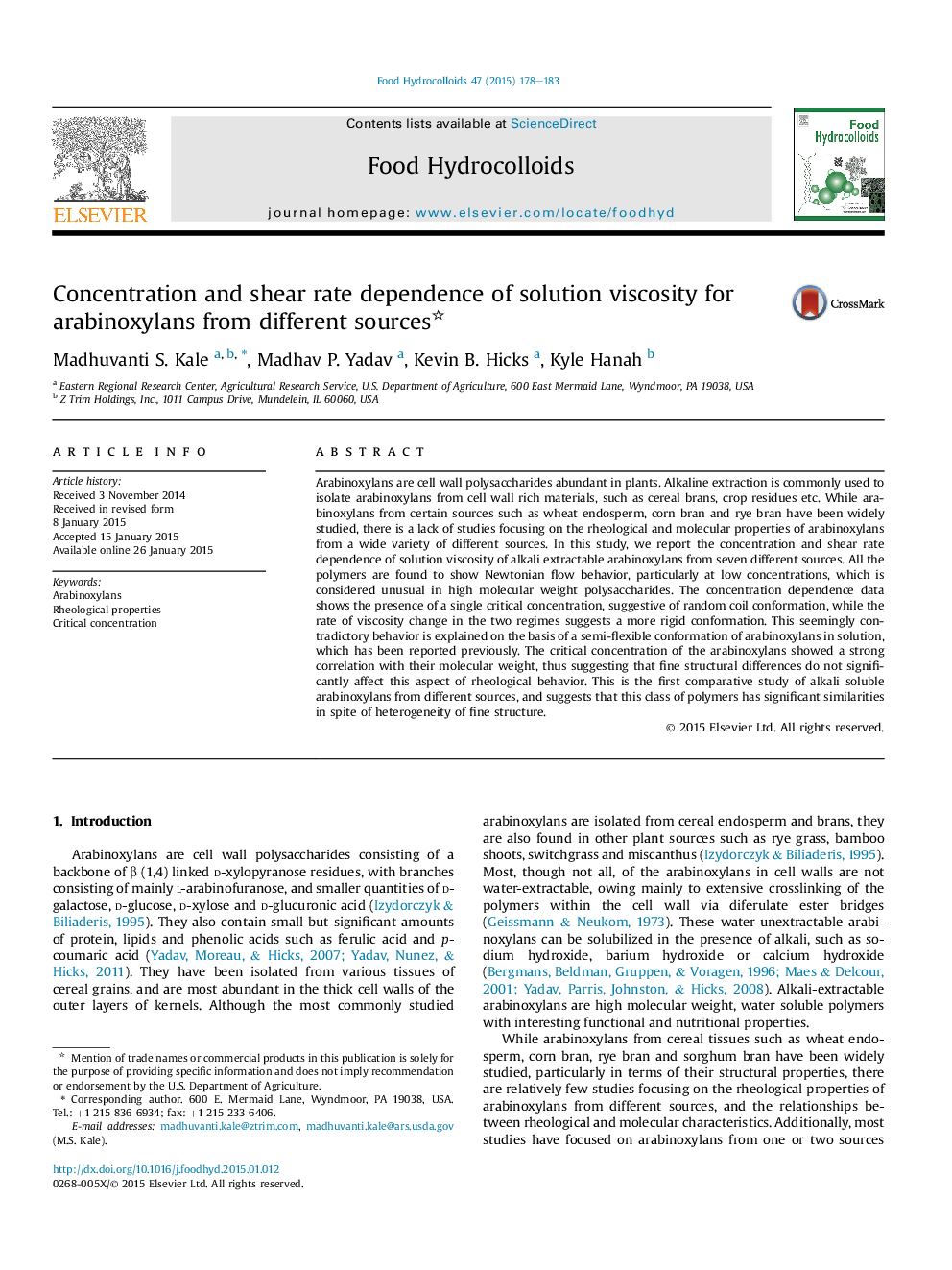| Article ID | Journal | Published Year | Pages | File Type |
|---|---|---|---|---|
| 604420 | Food Hydrocolloids | 2015 | 6 Pages |
•Arabinoxylans were isolated from many different agricultural sources.•All arabinoxylans showed Newtonian flow behavior, especially at low concentrations.•Two regimes of variation of viscosity with concentration observed in all cases.•Critical concentration of the arabinoxylans was correlated with molecular weight.•Significant similarity in flow behavior of arabinoxylans with different structures.
Arabinoxylans are cell wall polysaccharides abundant in plants. Alkaline extraction is commonly used to isolate arabinoxylans from cell wall rich materials, such as cereal brans, crop residues etc. While arabinoxylans from certain sources such as wheat endosperm, corn bran and rye bran have been widely studied, there is a lack of studies focusing on the rheological and molecular properties of arabinoxylans from a wide variety of different sources. In this study, we report the concentration and shear rate dependence of solution viscosity of alkali extractable arabinoxylans from seven different sources. All the polymers are found to show Newtonian flow behavior, particularly at low concentrations, which is considered unusual in high molecular weight polysaccharides. The concentration dependence data shows the presence of a single critical concentration, suggestive of random coil conformation, while the rate of viscosity change in the two regimes suggests a more rigid conformation. This seemingly contradictory behavior is explained on the basis of a semi-flexible conformation of arabinoxylans in solution, which has been reported previously. The critical concentration of the arabinoxylans showed a strong correlation with their molecular weight, thus suggesting that fine structural differences do not significantly affect this aspect of rheological behavior. This is the first comparative study of alkali soluble arabinoxylans from different sources, and suggests that this class of polymers has significant similarities in spite of heterogeneity of fine structure.
Graphical abstractFigure optionsDownload full-size imageDownload as PowerPoint slide
